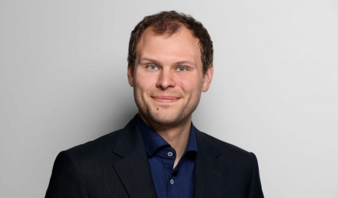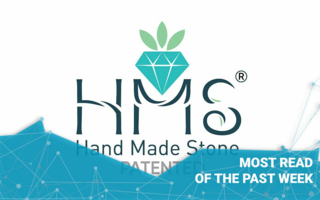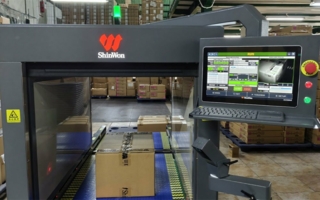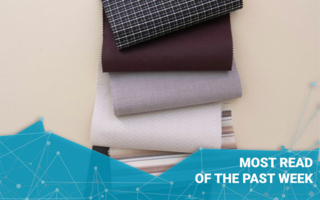09/05/2018 – Microfactory part 6 — auf Deutsch lesen
‘We want to bring production know-how back to Germany’
What opportunities does the Microfactory offer? We spoke to the coordinator of the Microfactory 4 Fashion project, Christian Kaiser, DITF Denkendorf.
The Microfactory concept not only offers the possibility of producing individualized, made-to-measure clothing very quickly, it will also bring production know-how back to Germany.
textile network: Mr. Kaiser, how was the idea for the Microfactory born?
Christian Kaiser: Right from the outset, we were excited about the possibilities offered by 3D simulations for the apparel industry – and we wanted to combine 3D with production. This is how the ‘Simulate, Print and Cut’ project came about. The cooperation between the companies involved – Assyst, Ergosoft, Zünd and the DITF as coordinator and conceptual pioneer – went very well. On the basis of these initial experiences, a Microfactory was set up for the first time at the Texprocess 2017 on behalf of the Frankfurt Trade Fair and with new partners – and it was geared to the requirements of the apparel industry for individual production.
textile network: How quickly were the participating companies convinced that the idea would work?
Christian Kaiser: We didn’t have to convince anyone, because every company saw the potential right away – and we gained Dürkopp-Adler as a partner for the Texprocess, so we were able to offer on-site manufacturing. Color management, an often painful but very important topic, can now be tackled together with our partner Caddon, color specialists who are also on board.
textile network: What are the goals of the project team?
Christian Kaiser: We want to bring the Microfactory onto the market as an overall concept. The individual solutions of the participating companies are already known and established in the industry – but we also them as a nucleus for testing Industry 4.0 solutions and their suitability for the ‘traditional production landscape.’
textile network What opportunities does the Microfactory offer apparel companies?
Christian Kaiser: The Microfactory is suitable for the production of individualized clothing in small batch sizes. Equally important to us, however, is the fact that the concept offers companies the opportunity to test specific problems on a small but industry-relevant scale and to acquire production know-how that’s not universally available in Germany today. Only very few companies maintain sampling lines and production sites in Germany – and the Microfactory offers the opportunity to expand existing know-how with a relatively manageable investment and to produce very small collections, for example, or individual items of clothing.
Microfactory 4 Fashion is currently being set up at DITF together with our partners. This will provide the German apparel industry with uncomplicated access to the Industry 4.0 technologies.
textile network: How complex is it for companies to implement the concept?
Christian Kaiser: At the Heimtextil, the Texprocess and the Munich Fabric Start trade fairs, we showed that a functioning Microfactory can be up and running in a short time, even with the special requirements of a trade fair – and setting up a prototype line is theoretically possible within a few days if you have a well-coordinated partner landscape.
textile network: How long does it take to produce a garment?
Christian Kaiser: We managed to get a T-shirt through the entire process in less than 40 minutes, so on average I’d say it’s possible to achieve runtimes of less than half a day for production lots. When it comes to design, it depends on the customer’s willingness to decide how long this step will take. Printing and cutting are done very quickly. Depending on whether an item of clothing is sewn or welded, putting the pieces together can take up a relatively large slice of the production time. The techniques are all very fast, but the high number of work steps is a factor that slows down the process. The use of assistance systems, the clever arrangement of work steps in islands, for example, and the use of programmable machines to reduce changeover times really holds enormous potential here.
textile network: For which products is a Microfactory implementation conceivable?
Shirts, blouses, shirts, dresses and pants – but with a larger setup, more complex products can also be manufactured – in fact, all types of outerwear can be produced.
Thank you Mr Kaiser for talking to us.
The questions on behalf of textile network were asked by Eva Fröhlich.




